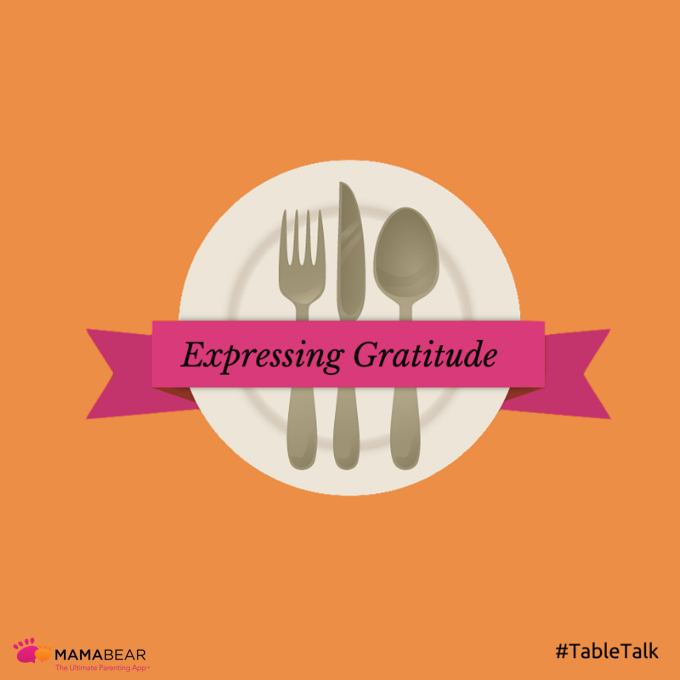Thanksgiving is a time that reminds us to express our gratitude and be more thankful, but throughout the year parents have an opportunity to bring that type of gratitude to the dinner table.
We don’t need to ask “What are you thankful for today?” in order to prompt conversations about gratitude with our families. There are many ways to bring more appreciation to the dinner table, and talking about being thankful might be more important than you think.
It’s Never Too Early to Start Being Thankful
Parents.com reports that children as young as 15 to 18 months can start to understand the concepts of gratitude. Barbara Lewis, author of What Do You Stand For? For Kids, explains that around the age of two or three, children can start to verbally acknowledge their gratitude for things in their life like people, pets and toys. And by age four, they are able to grasp the concept of being grateful for abstract items like love and kindness.
Since children are aware of gratitude at such a young age, it’s important to cultivate it early on and continue the process as they grow.
The Benefits of Being Thankful
Living a more grateful life can benefit your child throughout their lifetime. Those who practice gratitude feel less entitled and disappointed. They are more likely to be positive and find more satisfaction in their lives. All of which can affect mind and body. WebMD reports that practicing gratitude can decrease stress, boost the immune system, and encourage a healthier lifestyle.
Questions That Encourage Gratitude
Sitting around the dinner table is the perfect time to ask open-ended questions that can help your children practice gratitude. Because answering the basic question, “What are you thankful for?” might be hard for kids at first. These questions make it easy for them to identify and discover things they really appreciate and give you a chance to express your gratitude.
- Who was the best teacher you ever had?
- What is the best part of being a part of our family?
- What is one of your favorite memories from a family vacation?
- What is one thing you couldn’t live without?
- What is your favorite thing to do on the weekend or after school?
- What’s your favorite thing to do with your grandparents, aunts or uncles? Whom do you feel closest?
- What is something someone did to help you today?
- What’s your favorite thing about dinner tonight?
- What is your favorite part about living in our town?
- Who is your best friend in school? Why?
- What book is your favorite to read before bed?
Turn these questions into conversations. When your child responds, make sure to point out how lucky they are to have those experiences, items and family members. Point out that not everyone in the world has access those things.
This is a good way to get kids to see how much they really have to be thankful for, and help them acknowledge and cultivate a feeling of gratitude and gratefulness.
Show Your Gratitude
Children mirror the image of their parents, so be sure that you are practicing gratitude in your own life, especially when interacting with your kids. Share answers to the same questions.
Be sure to say “thank you” to them regularly even for small moments and events. (“Thank you for eating all your vegetables. Thank you for helping me clear the table. It made dinner easier and more enjoyable.” )
And most of all, remind them how grateful you are to be their parents.
Talking around the dinner table is a great way to build a deeper connection with your child. Maintain that connection inside and outside of the house by using MamaBear Family Safety App, which offers easy check-in features that can keep you and your kids connected anywhere, anytime. App is available for iPhone and Andriod devices.
